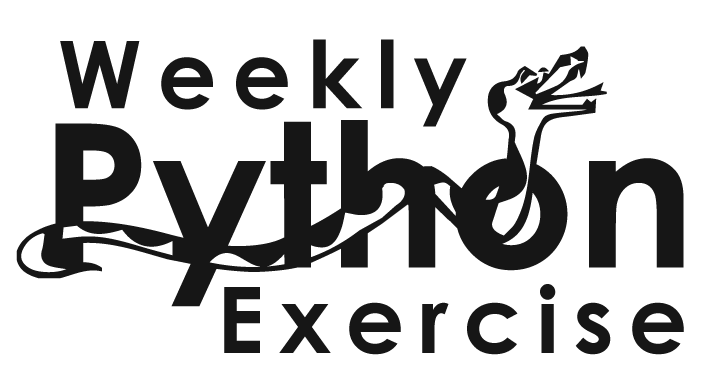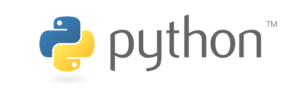[Update, as of August 8, 2019: Since I wrote this post, Linux Journal re-opened, thanks to a generous investment/purchase, and survived for another two years… And then, earlier today, I learned that LJ has closed, once again — and this time, for good. This post is just as accurate today as it was when I originally wrote it, back in 2017, when it shut down for the first time..]
 In 1995, just before moving to Israel, I was working for Time Warner in New York City. One day, I received email from a company called SSC, publishers of numerous “cheat sheets” for Linux users and programmers. They were about to publish a quick-reference guide for GNU Emacs, and since I was the maintainer of the Emacs FAQ, they wanted my input and thoughts.
In 1995, just before moving to Israel, I was working for Time Warner in New York City. One day, I received email from a company called SSC, publishers of numerous “cheat sheets” for Linux users and programmers. They were about to publish a quick-reference guide for GNU Emacs, and since I was the maintainer of the Emacs FAQ, they wanted my input and thoughts.
I gave them my feedback, and the people at SSC were so thankful for my help that they offered to give me, free of charge, any 10 items from their online catalog. In this way, I got a bunch of quick-reference cards, as well as several issues of the then-new publication, Linux Journal.
I had been using Unix since 1988, and had just started to use this new, open-source version. (I ordered a distribution Linux from a small company in Connecticut known as “Red Hat,” which made for a fairly straightforward installation on a PC. And by “fairly straightforward,” I mean that it only took a few days of configuration to get X Windows to work on my hardware.) So I was excited to read through Linux Journal. I loved what I read, and was in awe of the knowledgeable columnists they had.
In one of those issues was an ad, saying that the magazine would soon be starting a spinoff known as “Websmith,” all about a new phenomenon known as the “World Wide Web.”
Now, I loved to write: I had edited the student newspaper while studying at MIT, and I had always thought that it would be fun to write a column. So I e-mailed the editor of Websmith, asking if they would be interested in having me write a column about CGI programming — which was then the latest and greatest way to create what we now call “dynamic Web content.” After all, I had been doing Web development since early 1993, back when I set up one of the first 100 sites in the world; I figured that my technical and writing experience could be of help.
The editor said “yes,” and my column — which he called “At the Forge,” fitting in with Websmith’s blacksmith theme — was off to the races.
Websmith didn’t survive for very long; it seems that the World Wide Web wasn’t interesting or big enough to support a business. (Who knows? Maybe that’ll change some day.) But some of us who were writing for Websmith discovered that our columns and articles were simply incorporated into Linux Journal’s next issue, continuing from there.
In other words: I was suddenly and unexpectedly a Linux Journal columnist — a position that I have held, continuously and proudly, since 1996.
It’s thus extremely sad for me to know that Linux Journal is no more. The magazine’s publisher, Carlie Fairchild, announced the magazine’s closure to the staff and writers earlier this week, and is telling subscribers today.
Just to put things in perspective: Before I met my wife, before my children were born, before I started my 11-year-long PhD program, I was writing for Linux Journal.
For as long as we have been married, my wife has heard the following, typically several times each month, each time with increased urgency: “I have to work on the column, which was due a few days ago. My editor is going to kill me.”
Ditto for my children, whose definition of “deadline” has definitely been affected — for the worse — by my monthly worrying, complaining, and late-night writing.
But I’m not complaining. Writing for Linux Journal for so long has been a defining part of me, and my career, for a very, very long time.
Thanks to LJ, I have had a chance to write, which I so love to do. I have learned a huge amount through my writing, because each column required that I spend time learning before I could teach.
Thanks to LJ, I’ve even gotten some clients, who contacted me as a result of my articles.
Thanks to LJ, my wife and I were invited to visit Alaska and the Caribbean, when I was a featured speaker with “Geek Cruises.”
Thanks to LJ, I got many free books and other resources, was invited to speak at conferences, and was (much to my pleasant surprise) recognized at technical conferences, even when I didn’t speak there.
And of course, thanks to LJ, I’ve gotten to work with some amazing people. I’ve worked with a variety of editors, the most recent being Jill Franklin, all of whom were talented, helpful, and tolerant of my flexible interpretation of deadlines. They all gave me total freedom to write about whatever topic I wanted, whenever I wanted. I got to explore all sorts of great topics that were of interest to me, and to my clients, and (I believe) to my readers.
I received e-mail from people all around the world who read my columns, which was deeply satisfying and gratifying. At conferences, people would see my name badge and tell me that they had been reading my columns for many years. Even now, as I publish a weekly newsletter for programmers, I often get messages from people saying that they read my column in Linux Journal, and are happy to reconnect with me.
The publishing industry is changing, and that reality is hitting publishers big and small. Indeed, earlier this week, Time Inc. (yes, where I worked when SSC first contacted me) sold itself to another company. The combination of publishing economics, along with the plethora of free, online content for open-source enthusiasts, makes it hard to produce a profitable magazine with top-notch technical content.
Consider the world in 1996: Linux was an oddball operating system, supported by no major manufacturers and seen as a hacker’s plaything. Perl and Python were used by lots of individuals, but not for too many serious applications. MySQL was free, but wasn’t open source, and there weren’t any open-source options for people who wanted to use a database. And of course, Web applications were in their infancy; my “form-mail” program, which was used by countless sites to send e-mail (before it was taken and modified for the worse by Matt’s Script Archive) remained cutting edge for quite some time.
Things have changed a great deal since then. My phone uses Android, a form of Linux. When the flight attendant reboots the in-flight entertainment system, I see that it’s running Linux, as well. My 14-year-old daughter is learning Python. Companies from Apple to IBM, Cisco to PayPal, Ericsson to VMWare, in the US, Europe, Israel, and China, ask me to teach Python and Git to their employees. Who knew that the technologies I learned, and learned to love, so many years ago, would be so dominant in the world today?
And thus, while Linux Journal might have failed as a business, it succeeded in its mission: To spread the word of Linux and open-source software, to help people to understand, implement, and use open-source technology, and to bring these technologies into the mainstream as a legitimate alternative to the then-dominant commercial offerings.
To my many readers: Thanks for your support over the years. (And you can keep getting weekly writing from me via my “Better developers” newsletter.)
To the amazing staff at Linux Journal, over many years and in many iterations: Thanks for putting up with my delays, and for doing such a great job with my text. I can’t imagine how they edited a magazine with such in-depth technical content, but they did, and did it well.
To my family: Thanks for putting up with my loud, monthly stresses, including the many times in which I wondered, out loud, how they could possibly think to have a columnist who cannot get his software to work.
Oh, and to the three (!) journalists who e-mailed me in the last 10 days, asking to whom they could pitch stories for Linux Journal: Sorry, folks. You’re a bit too late.
RIP, Linux Journal. It has been a fun, wild ride.


